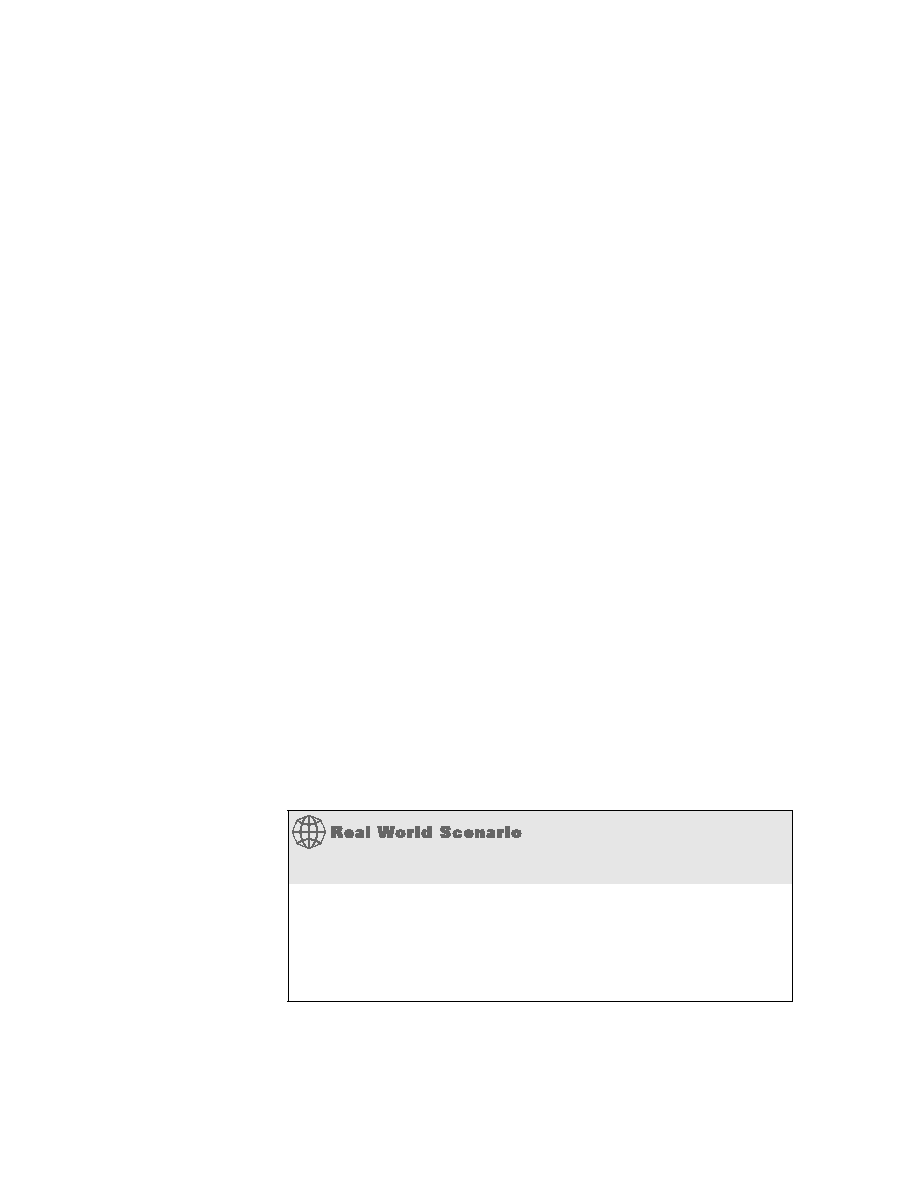
Routing Information Protocol (RIP)
287
C 172.16.50.0 is directly connected, Ethernet0
C 172.16.40.0 is directly connected, Serial0
R 172.16.30.0 [120/1] via 172.16.40.1, 00:00:06, Serial0
R 172.16.20.0 [120/1] via 172.16.40.1, 00:00:06, Serial0
R 172.16.10.0 [120/15] via 172.16.40.1, 00:00:06, Serial0
RouterC#
The [120/15] is bad, because the next router that receives the table from
router 2501B will discard the route to network 172.16.10.0, since the hop
count would then be 16, which is invalid.
Holding Down RIP Propagations
You may not want your RIP network advertised everywhere on your LAN
and WAN. For instance, there is no advantage to advertising your RIP net-
work to the Internet.
There are a few different ways to stop unwanted RIP updates from prop-
agating across your LANs and WANs. The easiest way to do this is through
the passive-interface command. This command prevents RIP update
broadcasts from being sent out a defined interface, but that same interface
can still receive RIP updates.
The following is an example of how to configure a passive-interface
on a router:
RouterA#config t
RouterA(config)#router rip
RouterA(config-router)#network 172.16.0.0
RouterA(config-router)#passive-interface serial 0
This command will stop RIP updates from being propagated out serial
interface 0, but serial interface 0 can still receive RIP updates.
Should we really use RIP in an internetwork?
No, probably not. However, what happens if you just have old routers that
don't support anything but RIP? Well, then you have to use RIP, at least in
some fashion. If you have an old network and need to support it, then you
can run RIP on a router connecting that old network, but you do not need to
run RIP throughout your entire internetwork.
Copyright ©2002 SYBEX, Inc., Alameda, CA
www.sybex.com
